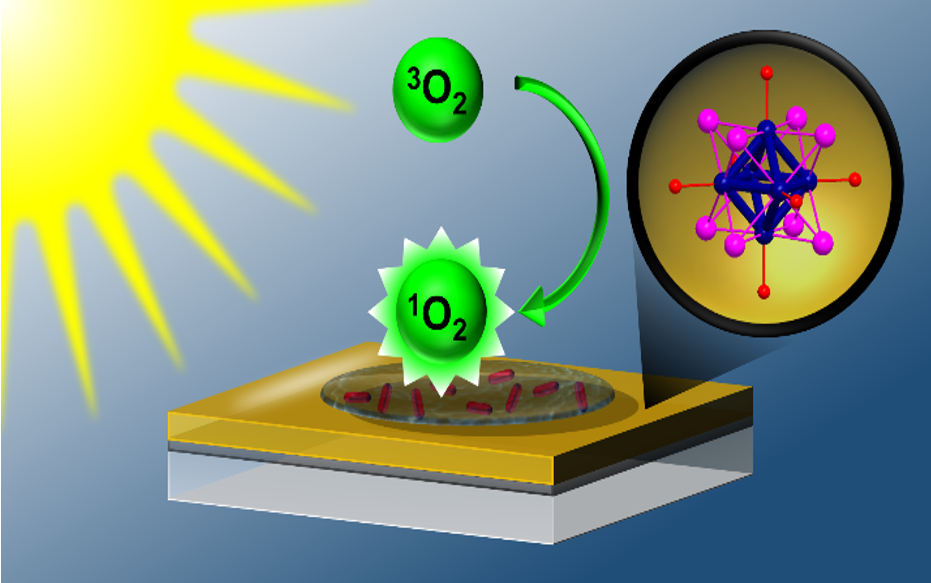
The fight against infective microorganisms is becoming a worldwide priority due to serious concerns about the rising numbers of drug-resistant pathogenic bacteria. In this context, the inactivation of pathogens by singlet oxygen, O2(1Δg), produced by photosensitizers upon light irradiation has become an attractive strategy to combat drug-resistant microbes. To achieve this goal, we electrophoretically deposited O2(1Δg)-photosensitizing octahedral molybdenum cluster complexes on indium–tin oxide-coated glass plates. This procedure led to the first example of molecular photosensitizer layers able to photoinactivate bacterial biofilms. These photoactive layers are attractive for the design of antibacterial surfaces activated by visible light and include additional functionalities such as the conversion of harmful UV/blue light to red light or oxygen sensing.
Kaplan Kirakci,*Thi Kim Nguyen, Fabien Grasset, Tetsuo Uchikoshi, Jaroslav Zelenka, Pavel Kubát, Tomáš Ruml and Kamil Lang* ACS Appl. Mater. Interfaces, 2020, 12, 47, 52499; DOI DOI 10.1021/acsami.0c19036